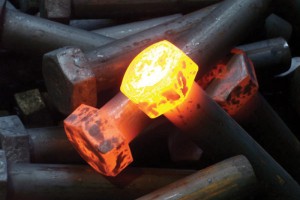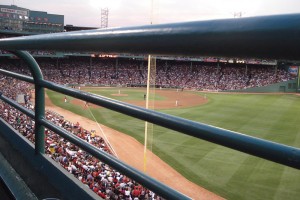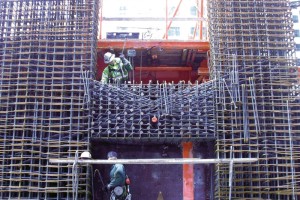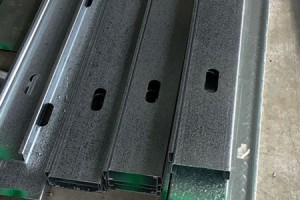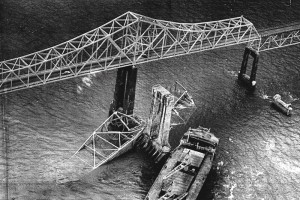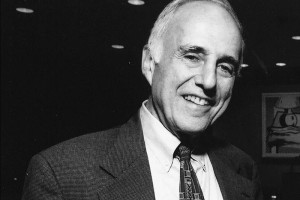The phrase “the devil is in the details” applies to anchor bolt design in masonry structures. The anchorage of masonry members is essential both for load transfer into the member and for stability and support of the member. There are typically two types of anchors used in masonry. Cast-in-place anchors, or anchor bolts, are generally designed using TMS 402 Building Code Requirements for Masonry Structures. Post-installed anchors are generally designed based on manufacturers’ data, with the design capacities of the anchors determined through International Code Council (ICC) Evaluation Service reports. This article focuses on anchor bolt design and, particularly, several recent revisions in the 2016 version of TMS 402 that will help with the design of anchor bolts.
…Monthly Archives : May 2022
To Top Rail or not to Top Rail
The engineering of guardrails has generally been straightforward ever since they were first addressed in building codes. Even the earliest building codes, like the Uniform Building Code (UBC) and the Building Officials and Code Administrators’ (BOCA) National Building Code, had live load requirements for typical handrail and guardrail scenarios.
…Part 2: Significant Changes to Design and Detailing Requirements
Significant changes were made to the design and detailing requirements for special steel-reinforced concrete structural walls in the 2019 edition of Building Code Requirements for Structural Concrete (ACI 318-19) (hereafter referred to as ACI 318).
…Can you identify cold-formed steel thickness just by the feel of the stud? If you cannot, you are not alone. There are many ways to easily identify CFS thicknesses, including using materials you just might have in your pocket.
…The first bridge across Tampa Bay connecting Rubonia, FL, with St. Petersburg, FL, opened on September 6, 1954. The main structure was a steel cantilever span with a length of 1,584 feet built by the Virginia Bridge & Iron Company. It replaced a ferry from Point Pinellas on the southerly side of St. Petersburg to Piney Point just north of Rubonia. There were two flanking deck truss spans of 250 feet 3 inches on each side, followed by low-level deck spans. A second parallel span of the same dimensions was built just to the west in 1969 but did not open until 1971 due to foundation problems. This provided two lanes in each direction, and the road became I-275, with the old bridge handling northbound traffic and the newer bridge handling southbound traffic. The total length of the central bridge was approximately 4.4 miles, and the total length of the entire project was 14 miles.
…Assisting in Innovation, Development, and Progress
Over the last three decades, structural design standards have clearly grown more prescriptive and complex. Some engineers argue that this has stifled structural engineering innovation. While this may be true to some extent, our codes and standards have always left the door open for engineers to design structures that do not fully meet the letter of the prescriptive codes and standards via demonstrating equivalent performance. In fact, ASCE 7, Minimum Design Loads and Associated Criteria for Buildings and Other Structures, and the International Building Code (IBC) both now have specifically recognized performance-based design procedures (see Section 1.3.1.3 of ASCE 7-16, e.g.).
…Robert (Bob) Silman, founder and President Emeritus of the structural engineering firm Silman, formerly Robert Silman Associates, passed away in 2018. Prior to the firm’s founding in 1966, Bob worked at Severud Associates, Ove Arup & Partners, and Amman & Whitney. Bob taught at Cornell, Columbia, Yale, and Harvard and was a fellow of the American Society of Civil Engineers. He was also an honorary member of the AIA New York Chapter, the Structural Engineers Association of New York, and the International Association for Bridge and Structural Engineering.
…This historic adaptive reuse project is a part of the Plant Riverside District, a 670,000-square-foot complex located just feet away from the Savannah River in Georgia. Initially built in 1912 as the Savannah Electric & Power Company’s power station, the building sat vacant from 2005 until 2016.
…The new Taiyuan Botanical Garden complex in Taiyuan, China, features three paraboloid domes ranging from 140 to 290 feet in diameter and from 40 to 100 feet in height. The gridshells comprise light doubly curved glulam beams arranged in two or three crossing layers. The project pushes the boundaries of structural engineering and construction technique in a country with little experience using timber for long-span applications, creating three beautiful gems for this growing city.
…Some of us think of ethical conflicts as having an ideal resolution, where we can discuss the scenario and assign blame to someone who would dare to arrive at a different decision. This is often reinforced by ethics discussions, where we assess a scenario and scoff at how the transgressor should know better and be subjected to punishment. “How can those people be so unethical!” we think to ourselves. However, an ethical conflict is not always a situation where a clear answer is apparent. Therefore, before deciding what the “right” answer is, let’s step back and reassess. What could lead us to make another decision and, by extension, lead another person to make a choice different from ours? Could they still be behaving ethically, and if so, can we define an ethical person solely through their actions, or do we need to understand their decision process? I propose that giving some thought to these issues can be very important in understanding ethics and providing sound mentoring.
…
